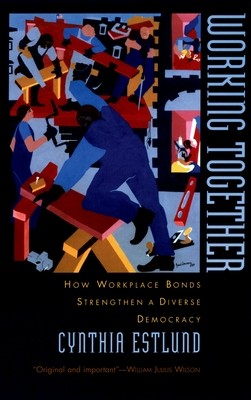
- We will send in 10–14 business days.
- Author: Cynthia Estlund
- Publisher: Oxford University Press, USA
- ISBN-10: 0195158296
- ISBN-13: 9780195158298
- Format: 14.4 x 22.7 x 1.5 cm, softcover
- Language: English
- SAVE -10% with code: EXTRA
Reviews
Description
At a time when communal ties in American society are increasingly frayed and segregation persists, the workplace is more than ever the site where Americans from different ethnic, religious, and racial backgrounds meet and forge serviceable and sometimes lasting bonds. What do these highly structured workplace relationships mean for a society still divided by gender and race? The involuntariness of workplace interactions--prescribed by both external law and internal constraints--helps ensure that the often-troubled and often-failed project of racial integration succeeds at work. People can be forced to get along--not without friction, but with surprising success.
This highly original exploration of the paradoxical nature--and the paramount importance--of workplace bonds concludes with concrete suggestions for how law can further realize the democratic possibilities of working together. In linking workplace integration and connectedness beyond work, Estlund suggests a novel and promising strategy for addressing the most profound challenges facing American society.EXTRA 10 % discount with code: EXTRA
The promotion ends in 10d.12:00:01
The discount code is valid when purchasing from 10 €. Discounts do not stack.
- Author: Cynthia Estlund
- Publisher: Oxford University Press, USA
- ISBN-10: 0195158296
- ISBN-13: 9780195158298
- Format: 14.4 x 22.7 x 1.5 cm, softcover
- Language: English English
At a time when communal ties in American society are increasingly frayed and segregation persists, the workplace is more than ever the site where Americans from different ethnic, religious, and racial backgrounds meet and forge serviceable and sometimes lasting bonds. What do these highly structured workplace relationships mean for a society still divided by gender and race? The involuntariness of workplace interactions--prescribed by both external law and internal constraints--helps ensure that the often-troubled and often-failed project of racial integration succeeds at work. People can be forced to get along--not without friction, but with surprising success.
This highly original exploration of the paradoxical nature--and the paramount importance--of workplace bonds concludes with concrete suggestions for how law can further realize the democratic possibilities of working together. In linking workplace integration and connectedness beyond work, Estlund suggests a novel and promising strategy for addressing the most profound challenges facing American society.

Reviews